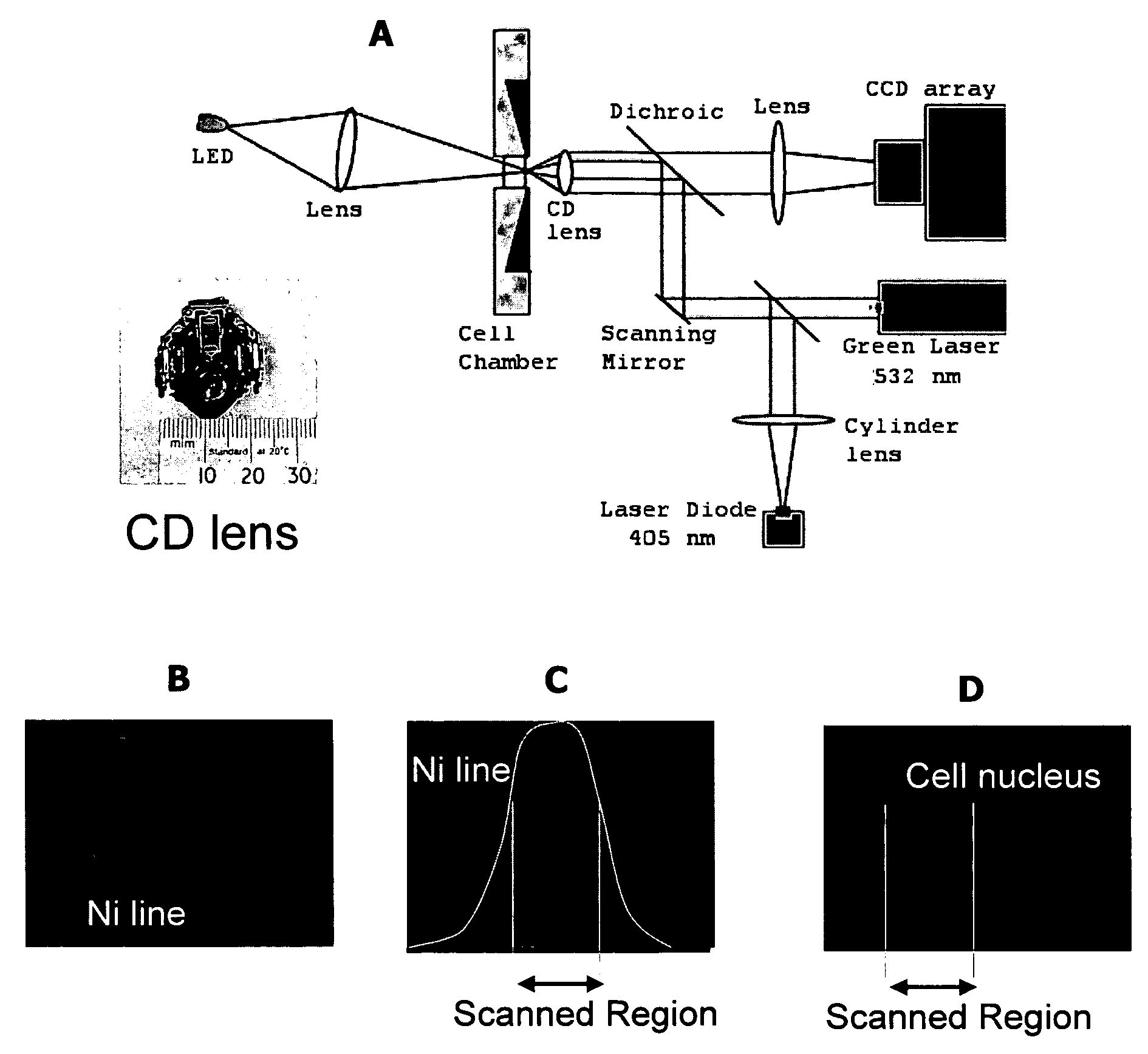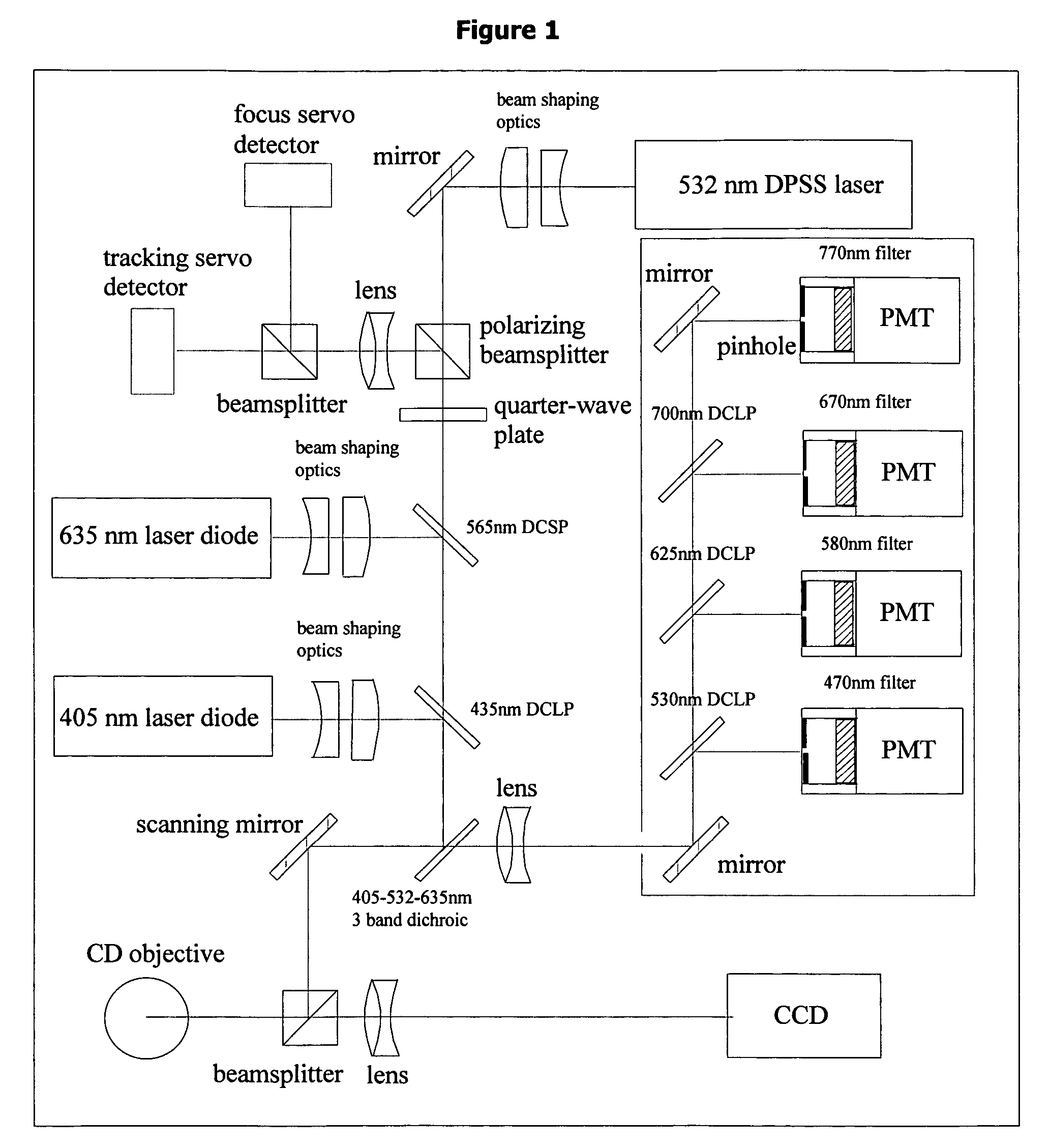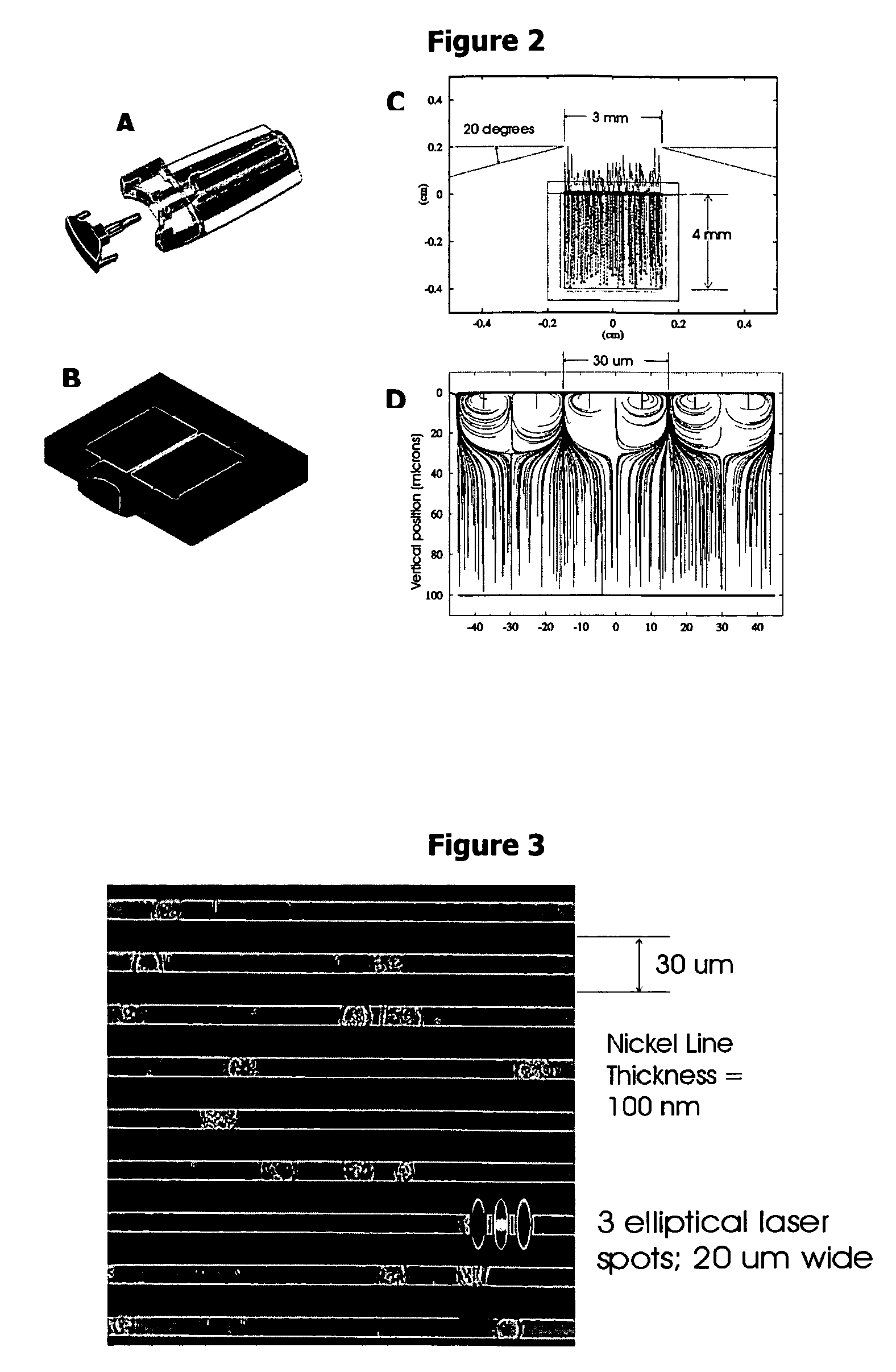Device and method for analytical cell imaging
- Summary
- Abstract
- Description
- Claims
- Application Information
AI Technical Summary
Benefits of technology
Problems solved by technology
Method used
Image
Examples
example 1
Determining the Nickel Line Spacing
[0055] To assess the size and shape of circulating tumor cells, blood samples of cancer patients were prepared with CellPrep™ and analyzed by a fluorescence microscope system. More than 1000 circulating epithelial cells from 8 patients with a variety of cancers were obtained and cell diameters were measured. Circulating epithelial cells within and between patients were heterogeneous in size and shape. FIG. 5 shows the cell size distribution ranging from approximately 5-30 μm with a mean diameter of 11.3 μm. This posed a problem of selecting a standard line spacing that could accommodate this variation in diameter. If the Nickel lines are spaced to accommodate the larger cells, then there is the risk that smaller cells will occupy the same lateral space or form clusters and be seen as a single event when scanned in the y-direction. If too narrow a space, then the Nickel lines will obscure a large percentage of the cells and compromise imaging of th...
example 2
Tumor Cell Analysis by the System
[0058] Cells from the prostate carcinoma tissue culture cell line, PC3, were used at a concentration of 5,000 PC3 cells / mL. Aliquots (10-100 □L) of this cell suspension were spiked into 7.5 mL whole blood samples of normal donors to obtain blood samples with low tumor cell numbers.
[0059] Approximately 300 PC3 cells were spiked into 7.5 mL of blood and processed with CellPrep™ as described above. When the sample is dispensed into the sample chamber while being held in the magnetic field, the immunomagnetically labeled cells are drawn to the upper inside surface of the chamber by magnetic forces from the permanent magnets. A bright field image of the aligned PC3 cells is shown in FIG. 3.
[0060]FIG. 6 shows the analysis of the sample. The 2-dimensional dot plot in FIG. 6A shows the fluorescence signals of CK-PE and CD45-APC. The tumor cell candidates (PC3-cells) staining with CK-PE and lacking CD45-APC can be clearly discriminated from the leukocytes ...
example 3
Scanning Methods
[0061] In the present instrument system, cells are imaged with laser illumination to avoid the additional cost, low intensity, and short lifetime of broadband light sources. However, the long coherence length of lasers and light reflections in the imaging system contribute coherent noise and speckle in the image. Also, the Gaussian intensity profile of the laser beam does not provide uniform illumination of the object. Both of these problems with coherent illumination are overcome by moving the laser spot across the object as the CCD array integrates the light. Movement of the source during exposure washes out the coherent noise in the image. Any angular scanning means, such as a scanning mirror, rotating mirror, electro-optic or acousto-optic deflector, or electro-refractive device could be used to deflect the beam by a small angle, providing motion of the focused laser spot at the object plane. By driving this device with a periodic signal, the spot is scanned bac...
PUM
 Login to View More
Login to View More Abstract
Description
Claims
Application Information
 Login to View More
Login to View More - R&D
- Intellectual Property
- Life Sciences
- Materials
- Tech Scout
- Unparalleled Data Quality
- Higher Quality Content
- 60% Fewer Hallucinations
Browse by: Latest US Patents, China's latest patents, Technical Efficacy Thesaurus, Application Domain, Technology Topic, Popular Technical Reports.
© 2025 PatSnap. All rights reserved.Legal|Privacy policy|Modern Slavery Act Transparency Statement|Sitemap|About US| Contact US: help@patsnap.com



